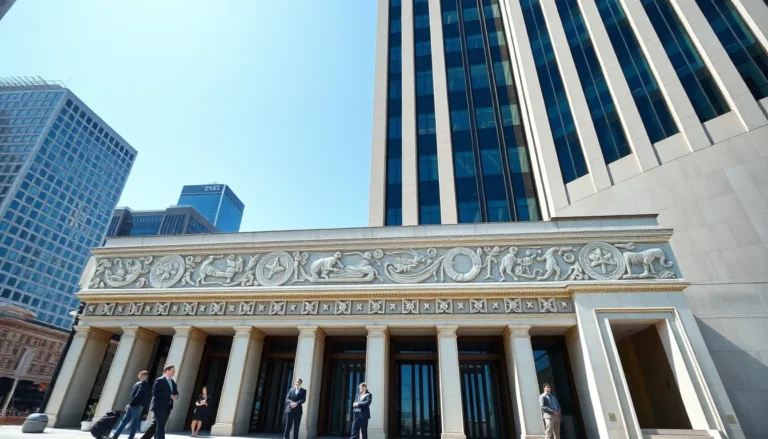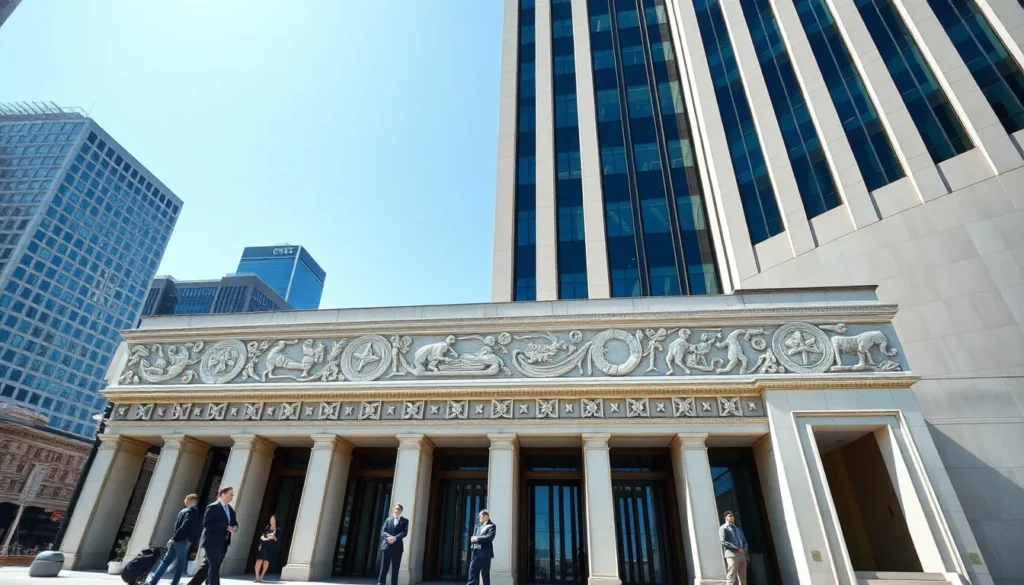Table of Contents
ToggleFrieze architecture might sound like a fancy dessert topping, but it’s actually a vital element of architectural design. Picture a beautifully detailed band that wraps around your favorite monuments, telling stories of history and culture. Intrigued? You should be. From ancient temples to modern skyscrapers, friezes are like the unsung heroes of architecture, adding depth and character to structures. Get ready to explore, this decorative element might just be the most captivating part of your next architectural tour.
Historical Significance of Friezes

The Role of Friezes in Ancient Civilizations
Friezes have played crucial roles throughout history, especially in ancient civilizations. These horizontal bands of sculpted or painted decoration were often used to narrate tales of gods and heroes, serving as visual storytelling for those who passed by. Just think of the Parthenon in Athens, where the frieze illustrates the Panathenaic Festival. This not only enhanced the temple’s aesthetic appeal but also communicated the civilization’s values and beliefs, demonstrating that art has deep roots in both culture and society.
Friezes in Classical Architecture
When we transition into classical architecture, the significance of friezes becomes even more pronounced. They adorned Greek and Roman buildings, often highlighting mythological themes or historical events. The intricate details found in Roman friezes, such as those on the Trajan’s Column, reveal narratives that celebrate military victories and civic pride. This blending of artistry with storytelling established a visual language that architects continue to draw upon centuries later.
The Renaissance and Baroque Influence
Modern Interpretations of Friezes
Fast forward to the Renaissance, and you’ll see a revival in frieze architecture that was simply breathtaking. Artists like Michelangelo and Raphael embraced this art form, infusing it with innovative techniques and frescoes that seemed alive. Today, modern interpretations often blend materials and styles, incorporating technology that allows for fresher, more contemporary narratives. Rather than just telling stories from the past, modern friezes can express current social issues or futuristic visions, melding history with modernity seamlessly.
Contemporary Uses and Innovations
In today’s architectural landscape, friezes aren’t limited to old buildings. They’ve found their way into contemporary designs, enhancing the façades of offices, museums, and private homes. For instance, advancements in materials like laser-cut metal and 3D printing are pushing the boundaries of how friezes can be created. This innovation opens up a world where an architect’s imagination can become reality, allowing for customized textures and intricate designs that were once unimaginable.
Design Elements and Techniques
Materials Used in Frieze Architecture
The material palette available for friezes is diverse and has evolved over time. Traditional friezes were often carved from stone or molded in plaster: but, modern techniques introduce materials like glass, ceramics, and even digital installations. Each material offers unique possibilities for texture, color, and depth. Artists and architects today are no longer confined to the limitations of stone. Instead, materials can be selected based on the desired effect, whether it’s a smooth, sleek finish or an organic, rough-hewn appearance.
Iconography and Symbolism in Friezes
Iconography is a core component of frieze design, adding layers of meaning that can engage viewers on different levels. For instance, the motifs of leaves, animals, and human figures serve not only aesthetic purposes but also signify various cultural narratives and ideals. The significance of these symbols can often be region-specific, enhancing the emotional and historical richness of the work. So, when a passerby gazes at a frieze, they’re often seeing more than decorative art, they’re peering into the soul of a culture.
Frieze Architecture Around the World
Regional Variations and Styles
Friezes vary greatly around the globe, showcasing the diversity of architectural styles influenced by geography, climate, and culture. In ancient China, for instance, friezes often depicted dragons and other symbolic creatures, reflecting deep cultural beliefs in harmony and power. In contrast, African friezes frequently emphasized community and kinship, often using vibrant colors and patterns that express a communal spirit. This rich tapestry of styles illustrates how friezes can serve as cultural personas, encapsulating local histories and identities.
Case Studies of Notable Friezes
Several monumental friezes stand out in architectural history, offering insights into the craftsmanship and artistic intent behind these structures. The Elgin Marbles from the Parthenon illustrate ancient Greek ideals of beauty and proportion, while the friezes at the Alhambra in Spain reveal the intricate Islamic art that weaves together geometry with floral motifs. These case studies not only highlight the importance of friezes in historical contexts but also inspire modern architects to push boundaries in their own designs.
Preservation and Restoration of Friezes
As architectural treasures, friezes require diligent preservation efforts to safeguard them for future generations. Many historical friezes have suffered from environmental wear, pollution, and even neglect. Preservationists employ a variety of techniques, from careful cleaning to applying protective coatings, ensuring that the artwork remains intact. Restoration isn’t simply mimicking the original designs: it’s about understanding the intent behind the work and using technology to replace deteriorated elements without compromising its authenticity. This commitment reflects not only respect for the past but also an understanding of the cultural narratives entwined in these artworks.







